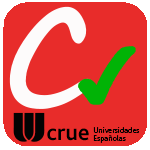Título
Turning of 42CrMo4+QT under different scenarios: dataset of machining, roughness and residual stressAutor-a (de otra institución)
Fecha de publicación
2024Otras instituciones
Universidad de OviedoVersión
Version publicadaTipo de documento
ArtículoArtículoIdioma
InglésDerechos
© 2024 The AuthorsAcceso
Acceso abiertoVersión de la editorial
https://doi.org/10.1016/j.dib.2024.110793Publicado en
Data in Brief Editorial
ElsevierPalabras clave
machiningmonitoring
alloyed steel
response surface methodology
Clasificación UNESCO
Tecnología de materialesResumen
The turning process remains one of the most widely used manufacturing methods in the industry due to its high flexibility and production rates. Despite being an extensively used technique, the impact ... [+]
The turning process remains one of the most widely used manufacturing methods in the industry due to its high flexibility and production rates. Despite being an extensively used technique, the impact of this machining process on the surface integrity of the components has not yet been resolved in the literature, although it is well known that it can have a major influence on their final life. With the aim of providing new insights in the field, an extensive experimental campaign was designed on a 42CrMo4 quenched and tempered steel (in the following 42CrMo4+QT) using the response surface method. As inputs of this experimental design, the principal machining parameters were selected: feed rate (mm/rev), cutting speed (m/min), depth of cut (mm) and insert radius (mm). Meanwhile the main outputs measured where the surface roughness (µm) and the longitudinal residual stresses (MPa). In parallel, the turning operation of each specimen was monitored and the forces (X, Y and Z), current consumption of the main lathe motor, sound pressure and tool holder accelerations were recorded. [-]
Colecciones
- Artículos - Ingeniería [757]
El ítem tiene asociados los siguientes ficheros de licencia:






















